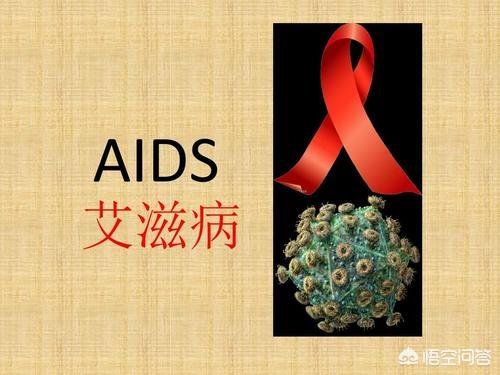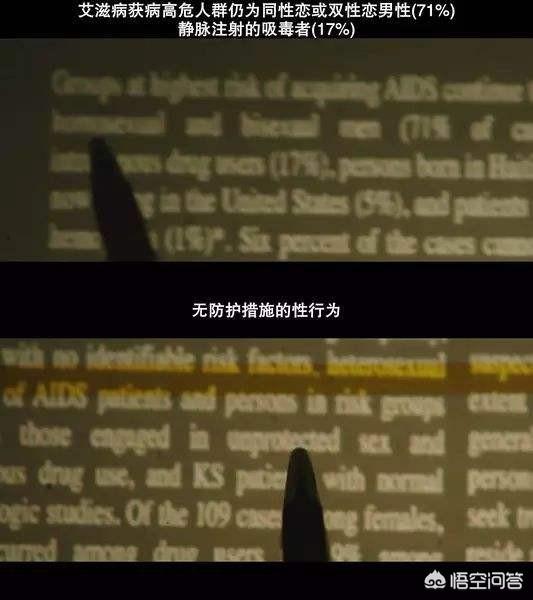What are the chances of getting infected by having sex with a person with HIV?
There are three main ways in which AIDS is transmitted
1. Transmission by sexual means, including heterosexuality and homosexuality.
2. Blood transmission, mainly by transfusion of blood or blood products.
3、Vertical transmission It is the transmission of non-babies by way of childbirth.
You can't get infected by daily contact with an AIDS patient. HIV infection is mainly caused by viral infection through body fluids or blood, and the amount of that virus and the activity of the virus infection affects the chance of infection.
Of course the chances of infection are different for different routes of transmission, these are just odds things, but if infected it's a 100% chance, so don't be sexually promiscuous.
Blood transfusions and childbirth are the most likely to be infected, followed by sexual intercourse, and the chances of infection vary with different forms of intercourse.

Even if the chances are very low, but once it happens is 100%, do not be all try to disease, now a lot of modern people infected with AIDS there are a lot of young students, mainly through homosexuality leads to individual young people through the drug route of infection, injecting drugs share the same syringe.
There are actually many ways to protect against transmitting HIV:
1. For example, the use of condoms for sexual intercourse can be a good way to avoid getting AIDS.
2. Do not use blood products as a last resort, and do not use syringes that have been used by others.
3. Check the immunization trio before pregnancy to avoid giving birth to a baby with AIDS.
4. Do not engage in promiscuity with sex workers to avoid the risk of contracting AIDS.

Knowing that HIV carriers still have sex with them, this is definitely true (sha) love (bi) ah! Research shows that if a male AIDS patient has unprotected sex with a normal male, the chance of infection is 0.5% to 3%. If a man with AIDS has unprotected sex with a normal woman, the chance of infection is 0.1% to 0.2%. When a woman with AIDS has unprotected sex with a normal man, the chance of infection is 0.03% to 0.1%. Some teasers are happy to fly when they see such data, such a low probability, a hundred times only zero to a few times, it is also considered a small probability of events. Brother Tubby, I urge you to be kind. What if God likes you so much that he wants to take you to the sky? The probability of one in a thousand will give you the jackpot every day, you are the one in a thousand, surprise or not? Surprised?
Research shows that in recent years, sexual transmission is the most important way of spreading AIDS, in which the transmission of same-sex is rising faster. So the tube, play to play, do not wipe the gun away, harming people and themselves ah! Some data show that the chances of highly educated people winning the bidding have risen compared to previous years. Is it possible that these ivory tower students are ready to devote themselves to science and explore the infection rate? What is called NO zuo NO die know?
The best behavior to avoid HIV infection is not to be sexually promiscuous... Reducing the number of sexual partners and having regular sexual partners are the best preventive measures. Proper use of condoms can effectively reduce the chance of HIV transmission. If you are found to have AIDS, timely treatment can effectively alleviate the complications of AIDS. It is important to start treatment when the CD4 is greater than 500, as timely treatment can effectively control the infection and reduce the viral load. According to a survey conducted by the World Health Organization, an early start of antiretroviral therapy for HIV patients can reduce the chance of transmission by 96.3%. Good luck.
What is the probability of a healthy person being infected by sexual intercourse with an AIDS carrier? This issue has been studied in various countries, but the data derived from these studies vary from country to country, and the more reasonable data are roughly as follows:
Probability of being infected after one unprotected sexual intercourse between a healthy person and a person with AIDS
1. The probability of male homosexual anal sex is about 0.5% to 3%;
2. Male-to-female transmission is about 0.1% to 0.2%;
3. Female to male transmission is about 0.03% to 0.1%;
4. Intact skin contact with HIV-containing body fluids, etc. is not infectious, and the probability of infection after contact with mucosal surfaces is 0.09%.
Groups do not represent individuals
In medicine, probability is primarily directed at populations thatFor individuals, the chance of infection is only 0 vs. 100%.
The Nature of HIV Infection
The essence of HIV infection is the exchange of body fluids. If the exchange of body fluids can be isolated, there is no risk of infection.
The body fluids of an infected person include mainly blood, semen, breast milk, vaginal secretions, amniotic fluid and cervical secretions.
HIV is also present in tears and saliva, but because of the low levels, no cases of associated infections have been reported.
Like feces, snot, sputum, sweat, urine, vomit these were not found to be infectious.
Synthesis:The probability of a healthy person becoming infected in a single sexual intercourse with a person living with HIV is influenced by the presence or absence of protection, the integrity of the mucous membrane, and the method of sexual intercourse.
By all means, clean up your act and get into the habit of using condoms. No matter how low the odds are, don't risk your life trying.
Although the probability of being infected by having sex with a person living with HIV is very low, only one in a thousand, we should understand that this one in a thousand is only a calculated probability, and once the person concerned is infected, it is 100 percent!
With the HIV virus, none of us should take the risk to gamble because one cannot be lucky forever and you always walk by the river without wetting your shoes. What we should do is to be vigilant all the time and keep ourselves clean so that the virus has no chance to take advantage of us.
The most common and effective means of protecting yourself is to date less and wear more condoms. Fewer dates means fewer sexual partners and a lower likelihood of having high-risk sex. And more condoms, wearing condoms all the time, can reduce HIV infection by more than 90 percent.
The most fundamental way to be able to keep yourself from getting infected is to keep yourself from getting infected. In the transmission of HIV, the risk of infection is much higher in gay men having anal sex because the mucous membrane of the rectum is more prone to breaks, and if you don't use a condom, the virus can invade through small wounds in the mucous membrane and ruin your life.
The probability is very low, only 1 per 1,000!!!! But this is purely in terms of one individual, in reality we can't understand it in this simple way!
The chances of getting infected by having sex with an HIV carrier can be understood in two ways!
First, the probability of infection from unprotected sexual intercourse!Indeed, after a statistical study, it is actuallyIt is true that the probability of contracting HIV from unprotected sex is only 1 per 1,000, not that if you have sex with a person who is living with HIV, you will be infected 100% of the time., clinically it is true that also found that some couples have been sexually active for more than ten years, and did not get infected with AIDS also have.
But note: this is not to say that you can do whatever you want with theThink of it this way: the 1 in 1,000 chance of it happening to you is 100%!As a matter of fact, when I was sitting in the outpatient clinic, I really came across a young man in his twenties who thought he already knew enough about the probability of transmission of AIDS, and he said, "Doctor, didn't the books say that the probability of transmission is very low? I've only had sex twice, why did I get infected? This is how I explained to him at that time:Once is 1 per thousand, twice is more, and you have to think of it this way, if there are a million people having sex a day, divided by 1,000, how many per day? Or, if you multiply that by 365 days a year, how many?You're so smart, you don't need to go into that much detail to know that, right?So don't take any chances. Fluke fluke fluke will be unfortunate in the end!
Oh, and by the way.A word of caution: the 1 per 1,000 just mentioned is only between heterosexuals, homosexuals are 1 in 2,000, and add to that the probability of infection is even higher for those who have their own STDs, herpes, and genital injuries!
Secondly, wearing a condom and having sex with a person living with HIV is certainly much, much less likely to result in infection than unprotected sex, but note: again, it is not 100% free of infection, but rather condoms are currently the most effective means of preventing infection with HIV, but they are not absolutely effective!The probability of infection is much better compared to letting someone infected with HIV wear a condom than letting a healthy person wear one, and the reason why homosexuality is so highly infectious is often also related to the fact that they are the ones who don't need to use condoms!
Lastly, be sure to get screened around three months once you realize you are engaging in high-risk sexual behavior!
I'm Dr. Zhang Guoxi, a male doctor at Beida People's Hospital, if you want to learn about men's health issues you can follow me, and if you have any questions you can leave a private message.
You can't walk by the river without getting your shoes wet.
Although there have been domestic and international surveys on the chances of various HIV infections, please note that this is only the big data, for example, when heterosexual condomless coitus, the chances of infection is less than 0.2%, that is to say, less than 2 out of 1,000 people can be infected, and to be specific to a single individual, there are only two options: 0 and 100%.
Therefore, clinicians have been emphasizing that lovemaking must be well protected, if not, it is taking a momentary block to gamble on those seconds of pleasure, which simply does not pay off.
Of course, if you have sex with HIV carriers do not need to be too nervous, after all, according to the big data, the probability is still very small, then you need to do one is to go to the hospital or the local CDC to consult, check for HIV infection, and on the other hand to avoid unprotected relationships with other people.
If you have sex with a person with AIDS without any protection, the probability of transmission is generally around 0.1%. In other words, the probability of transmission is 1 in 1,000. Therefore, according to this probability, it does not necessarily mean that sex is contagious, but only that there is a certain risk.
The main way of transmission of HIV is through bodily fluids or blood. In the course of sexual intercourse, if there is no obvious wound on the vagina or penis, the probability of transmission is relatively low, while if there is a conception in the course of sexual intercourse the probability of transmission will be significantly increased.
For HIV transmission, the probability of transmission varies significantly by sexual lifestyle. The highest probability of transmission is usually through direct blood transfusion, which has a probability of transmission of more than 90%. The second most common mode of transmission is childbirth. If the mother is infected with HIV, there is a 25% chance that the infection will be transmitted to the fetus during childbirth.
In the case of shared syringes, the probability of transmission is generally around 0.67%. The probability of transmission is around 0.3% if only subcutaneous needling is performed. In the case of anal sex, the probability of transmission is significantly higher than in normal sexual intercourse, as the anus is very prone to breakage, and the probability of transmission is generally around 0.5%.
So if you have sex with AIDS patients do not need to worry too much, generally after the window period can be carried out after the blood test, and in the sexual life must do a good job of protective measures, such as the use of condoms can greatly reduce the probability of infection.
Recently, I've been asking for this every day, so I guess it's contagious! One hit at a time!
A chart that shows you what are the chances of @#@$ infection with a person with HIV.

@#@$@%#@$@that shy thing, breaking through the gender constraints on the contrary, men and men are more likely to spread
What? The infection rate is so low? Then what am I afraid of?
It's scary that you think like that.
Cleanliness, do not look for flowers, when what the flower thief, health and life is at stake, please gentleman self-respect, once not pay attention, will regret for life!
The reason why AIDS is so rampant is mostly related to the individual's health awareness and self-restraint.
So remember to protect yourself, and for the sake of each other's health, please do so by using condoms, which can greatly reduce the likelihood of contracting diseases.
The questioner makes a mistake that many patients and ordinary people make, which is to confuse the occurrence of disease in an individual with the probability of disease in a group.
In fact, the consequences of someone having sex with an HIV carrier are that they will either become infected and become HIV carriers or AIDS patients, or they will not become infected and be as healthy as they were before they had sex. In other words, the chances of a certain disease occurring in an individual are either 0% or 100%, and there is no in-between; it is impossible to say that the person is 50% infected after having sex with an HIV carrier.
The odds of becoming infected after sex with an HIV carrier is the proportion of the entire such population that becomes infected after HIV exposure, and is population-specific, a statistic that medical practitioners need to have to guide epidemiologic protection of the population and clinical research, and has no practical significance for the individual patient.
So what if the probability is low? If you are infected, it is 100%!
So what if the probability is high? If you are not infected, it is 0%!
There is now some foreign data on the probability of HIV transmission occurring in a group for your reference:
under single unprotected sexual conditions.
The prevalence of infection of a woman by a male carrier is about 0.1% among people who have intercourse using penile-vaginal sex;
The prevalence of infection of the male partner by the female carrier is about 0.05% in people who have intercourse using penile-vaginal sex;
The prevalence of infection in the inserted party is about 0.5% for those who have intercourse using anal sex;
The prevalence of infection on the inserting side is about 0.65% for those who have intercourse using anal sex;
The prevalence of infection in the inserted party is about 0.01% for those who have intercourse using oral sex;
The prevalence of infection on the inserting side is about 0.005% for those who have intercourse using an anal sex lifestyle.
So, the only way to avoid HIV transmission is to be clean, principle drugs and use condoms!
This question and answer are from the site users, does not represent the position of the site, such as infringement, please contact the administrator to delete.